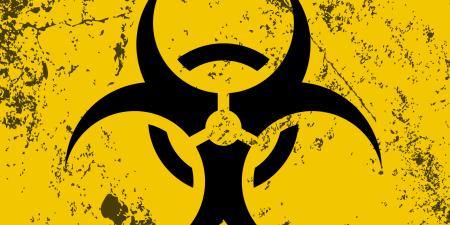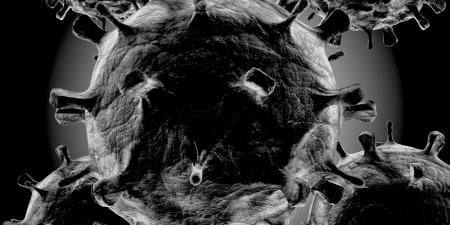Disaster and mass casualty incidents (MCIs) are defined as occurrences wherein the scale and volume of injuries exceeds the ability of medical response at multiple levels. Coordinated responses to MCIs place a strain on the capacity of first responders in the field, medical personnel, and health care resources. The sudden increase in the number of patients and the possibility that many of them are critically injured create a need for screening and diagnosis rapid enough to compensate for the extreme patient load. Moreover, as a result of the disaster, many people seek medical care for both acute and routine conditions unrelated to traumatic illness. Hence, ultrasound performed by first responders and clinicians is in many ways ideally suited for disaster situations because it is a rapid, portable diagnostic tool with a variety of applications.
While radiologists have long appreciated the usefulness of ultrasound, most other clinical specialties have only recently begun to recognize the many benefits of this technology in the care of the critically ill or injured patient. The role of sonography in trauma has been well established, as demonstrated by the focused assessment by sonography in trauma (FAST) examination, which is now a routine part of trauma care [1]. Ultrasound guidance has been shown to improve patient safety during a variety of invasive procedures [2-5] and is a recommended practice in patient safety guidelines both in the United States and abroad [6, 7]. As a bedside tool, sonography has been shown to aid in the management of trauma in pregnancy, shock and hypotension, and orthopedic injuries, and has myriad other applications related to mass casualties [8, 9]. A number of professional societies now require training in point-of-care ultrasound [10, 11] for their graduates, and the increased familiarity of physicians with this technology and its relative portability make hand-carried ultrasound an ideal tool for both diagnostic measures and interventional guidance in disaster and mass casualty settings.
Among the first to describe and quantify the use of point-of-care ultrasound in a natural disaster setting were Sarkisian and colleagues [12], following a magnitude-6.9 earthquake that devastated northwestern Armenia in December 1988. This incident resulted in more than 25,000 deaths and roughly 150,000 injuries in a region where the population was nearly 700,000 people. Yerevan, the capital city, was relatively unaffected, and Republic Hospital, which had 1,000 beds, served as the main medical facility for casualty victims. The lone available computed tomography (CT) scanner in Yerevan was dedicated to managing head-trauma cases. Two triage rooms, each with an ultrasound machine, were created in the lobby of the hospital. Six physicians staffed the two rooms on a rotating basis and performed ultrasound examinations on as many trauma victims as time permitted. In a 72-hour period, 750 patients came through the hospital. Four hundred of these patients received 530 ultrasound examinations either in the makeshift triage rooms or the hospital’s emergency ward.
Of the 530 exams, 304 were considered negative, and 96 (about 20 percent) demonstrated some form of pathology. Sixteen patients had operative intervention, usually laparotomy, based solely on clinical examination and ultrasound findings. The authors reported four false-negative cases (less than 1 percent) among the 530 studies performed, which illustrates the limitations of point-of-care sonography in trauma: one patient was found to have a ruptured kidney on laparotomy; another, a retroperitoneal hematoma; the third had a subcapsular hematoma of the spleen; lastly, an obese patient was noted to have a massive hemothorax. Ultrasound is known to have a low sensitivity for detecting hollow viscus or retroperitoneal injuries, and obesity and subcutaneous emphysema decrease exam accuracy. Despite these limitations, ultrasound proved to be highly sensitive and specific in this resource-limited circumstance [12].
In another study following a magnitude-7.6 earthquake in Turkey in August 1999, Keven and colleagues [13] examined the prognostic utility of ultrasound in determining the need for dialysis from crush injuries. Estimates of fatalities and casualties from this event vary, but the generally reported numbers indicate that approximately 17,000 people were killed and another 45,000 were injured [14]. Particularly devastating were the crush injuries suffered as a result of thousands of structural collapses, an outcome later observed following earthquakes in Bam, Iran, in 2003 [15], Kashmir in 2005 [16], and in Haiti in January 2010 [17].
During the 1999 earthquake in Turkey, 5,302 patients were admitted to various regional hospitals; 639 of them had renal complications due to crush injuries, and 477 underwent hemodialysis after developing acute renal failure. Renal ultrasound in particular was used to gauge whether victims needed urine alkalization and administration of intravenous mannitol and to identify the amount of intravenous fluid needed. Specifically, physicians at the various hospitals studied Doppler flow to the kidneys to calculate the renal resistive index, which was found to correlate reliably with the presence of oligoanuria and the need for hemodialysis. The authors concluded that this measurement might provide predictive information about recovery from acute renal failure resulting from crush injury [13].
While these earlier reports describe the use of hospital-based ultrasound during mass casualties, more recent events and technological developments have allowed medical personnel and first responders to take the ultrasound to the patient in the field. Dean et al. who took hand-carried ultrasound to Guatemala in 2005 following devastating mudslides, describe the variety of uses they found for the ultrasound machine and the range of probes with which they assessed patients in the field [18]. In all, 99 patients received 137 ultrasound exams: 58 pelvic, 34 right upper quadrant, 23 renal, 6 other abdominal, 5 orthopedic, 4 cardiac, 3 pleura and lung, 3 soft tissue, and 1 focused assessment by sonography in trauma (FAST). Most of these exams were performed with a single curved transducer in an austere setting.
Mazur and Rippey reported on the use of portable ultrasound by a disaster medical assistance team (DMAT) after a cyclone in Western Australia during March 2007 [19]. The need to transport patients from their remote location for tertiary-level care demanded rapid diagnostic capabilities, and, with the region’s only CT scanner felled by the cyclone, hand-carried ultrasound helped them determine the severity of patient illness. The primary studies performed were the FAST examination and thoracic ultrasound. This case report indicated that a portable ultrasound machine was easy to transport with a DMAT team and added very little weight or bulk to the total equipment load.
Other authors have described employing ultrasound in disaster response following the tsunami in Banda Aceh in 2004 [20], the Wenchuan earthquake in 2008 [21], and the recent Haitian earthquake [22]. These studies also demonstrate the benefit of sonography for first responders or hospital personnel and for use in remote settings.
In addition to its utility in natural disasters, ultrasound has played an increasingly large role in the evaluation of patients following terrorist attacks and military mass casualty events. Emergency responders and hospital personnel performed FAST examinations following the Madrid train bombing in 2004 [23] and the London Underground bombing in 2005 [24] and during the second Lebanon war in 2006 [25]. Raja and colleagues recently reported performing FAST examinations after explosive mass casualty incidents in a battlefield hospital in Iraq [26]. These authors used the ultrasound for initial assessment and surgical decision making; the trauma team designated stable patients with negative FAST exams for delayed CT scans and imaged higher-priority patients first. Conversely, positive examinations enabled the team to identify patients for whom immediate surgical care was most likely warranted. In their experience, ultrasound proved invaluable for streamlining patient care during a MCI.
Medical deployments to MCIs often involve less-than-ideal conditions. Traditionally, most hand-carried ultrasound machines have not had the durability to withstand the harsh environs. In the past few years, however, compact and robust portable ultrasound machines have been developed and employed in forward military settings and prehospital care. This technology can now be considered for a wider field of practice, including more remote environments [27].
Hand-carried ultrasound is being used for newer diagnostic purposes as well. The technology has shown high accuracy for the detection of pneumothorax [28-30]. Other authors have used ultrasound to detect long bone fractures [31, 32] and to assess adequate fracture reduction [33, 34]. Sonography’s adaptability to conditions where x-ray availability is limited or absent further add to its value as a tool in disaster relief.
During disasters and mass casualties, point-of-care ultrasound makes it possible to diagnose thoraco-abdominal injuries rapidly and accurately, offers a tool for procedure guidance, and has streamlined patient triage. As trainees in various specialties become increasingly familiar with this diagnostic modality and the machines themselves become more portable and durable, ultrasonography will become an integral part of disaster response both in the field and at medical facilities caring for the injured and ill.
References
-
American College of Surgeons. Advanced Trauma Life Support for Physicians. Chicago: American College of Surgeons; 1997.
- Leung J, Duffy M, Finckh A. Real-time ultrasonographically-guided internal jugular vein catheterization in the emergency department increases success rates and reduces complications: a randomized, prospective study. Ann Emerg Med. 2006;48(5):540-547.
- Nazeer SR, Dewbre H, Miller AH. Ultrasound-assisted paracentesis performed by emergency physicians vs the traditional technique: a prospective, randomized study. Am J Emerg Med. 2005;23(3):363-367.
-
Jones PW, Moyers JP, Rogers JT, Rodriguez RM, Lee YC, Light RW. Ultrasound-guided thoracentesis: is it a safer method? Chest. 2003;123(2):418-423.
- Osranek M, Bursi F, O’Leary PW, et al. Hand-carried ultrasound-guided pericardiocentesis and thoracentesis. J Am Soc Echocardiogr. 2003;16(5):480-484.
-
US Agency for Healthcare Research and Quality. Ultrasound guidance of central vein catheterization. In: Making Health Care Safer: A Critical Analysis of Patient Safety Practices. http://archive.ahrq.gov/clinic/ptsafety/chap21.htm. Accessed August 11, 2010.
-
National Institute for Clinical Excellence. Guidance on the use of ultrasound locating devices for placing central venous catheters. 2002. www.nice.org.uk/nicemedia/pdf/Ultrasound_49_guidance.pdf. Accessed August 11, 2010.
- Goodwin H, Holmes JF, Wisner DH. Abdominal ultrasound examination in pregnant blunt trauma patients. J Trauma. 2001;50(4):689-693.
- Tayal VS, Antoniazzi J, Pariyadath M, Norton HJ. Prospective use of ultrasound imaging to detect bony hand injuries in adults. J Ultrasound Med. 2007;26(9):1143-1148.
- Akhtar S, Theodoro D, Gaspari R, et al. Resident training in emergency ultrasound: consensus recommendations from the 2008 Council of Emergency Medicine Residency Directors Conference. Acad Emerg Med. 2009;16(Suppl 2):S32-S36.
- Mayo PH, Beaulieu Y, Doelken P, et al. American College of Chest Physicians/La Societe de Reanimation de Langue Francaise statement on competence in critical care ultrasonography. Chest. 2009;135(4):1050-1060.
- Sarkisian AE, Khondkarian RA, Amirbekian NM, Bagdasarian NB, Khojayan RL, Oganesian YT. Sonographic screening of mass casualties for abdominal and renal injuries following the 1988 Armenian earthquake. J Trauma. 1991;31(2):247-250.
- Keven K, Ates K, Yagmurlu B, et al. Renal doppler ultrasonographic findings in earthquake victims with crush injury. J Ultrasound Med. 2001;20(6):675-679.
-
Marza V. On the death toll of the 1999 Izmit (Turkey) major earthquake. ESC General Assembly Papers. Potsdam: European Seismological Commission; 2004. http://www.esc-web.org/papers/potsdam_2004/ss_1_marza.pdf. Accessed August 11, 2010.
- Tahmasebi MN, Kiani K, Mazlouman SJ, et al. Musculoskeletal injuries associated with earthquake. A report of injuries of Iran’s December 26, 2003 Bam earthquake casualties managed in tertiary referral centers. Injury. 2005;36(1):27-32.
- Vanholder R, van der Tol A, De Smet M, et al. Earthquakes and crush syndrome casualties: lessons learned from the Kashmir disaster. Kidney Int. 2007;71(1):17-23.
- Vanholder R, Gibney N, Luyckx VA, Sever MS. Renal Disaster Relief Task Force. Renal disaster relief task force in Haiti earthquake. Lancet. 2010;375(9721):1162-1163.
- Dean AJ, Ku BS, Zeserson EM. The utility of handheld ultrasound in an austere medical setting in Guatemala after a natural disaster. Am J Disaster Med. 2007;2(5):249-256.
- Mazur SM, Rippey J. Transport and use of point-of-care ultrasound by a disaster medical assistance team. Prehosp Disaster Med. 2009;24(2):140-144.
- Pearce A, Mark P, Gray N, Curry C. Responding to the Boxing Day tsunami disaster in Aceh, Indonesia: Western and South Australian contributions. Emerg Med Australas. 2006;18(1):86-92.
- Dan D, Mingsong L, Jie T, et al. Ultrasonographic applications after mass casualty incident caused by Wenchuan earthquake. J Trauma. 2010;68(6):1417-1420.
- Abuhamad AZ. Ultrasound outreach and the crisis in Haiti. J Ultrasound Med. 2010;29(4):673-677.
- Turegano-Fuentes F, Caba-Doussoux P, Jover-Navalon JM, et al. Injury patterns from major urban terrorist bombings in trains: The Madrid experience. World J Surg. 2008;32(6):1168-1175.
- Aylwin CJ, Konig TC, Brennan NW, et al. Reduction in critical mortality in urban mass casualty incidents: analysis of triage, surge, and resource use after the London bombings on July 7, 2005. Lancet. 2006;368(9554):2219-2225.
- Beck-Razi N, Fischer D, Michaelson M, Engel A, Gaitini D. The utility of focused assessment with sonography for trauma as a triage tool in multiple-casualty incidents during the second Lebanon war. J Ultrasound Med. 2007;26(9):1149-1156.
- Raja AS, Propper BW, Vandenberg SL, et al. Imaging utilization during explosive multiple casualty incidents. J Trauma. 2010;68(6):1421-1424.
- Blaivas M, Kuhn W, Reynolds B, Brannam L. Change in differential diagnosis and patient management with the use of portable ultrasound in a remote setting. Wilderness Environ Med. 2005;16(1):38-41.
- Kirkpatrick AW, Brown DR, Crickmer S, et al. Hand-held portable sonography for the on-mountain exclusion of a pneumothorax. Wilderness Environ Med. 2001;12(4):270-272.
- Kirkpatrick AW, Sirois M, Laupland KB, et al. Hand-held thoracic sonography for detecting post-traumatic pneumothoraces: The Extended Focused Assessment with Sonography for Trauma (EFAST). J Trauma. 2004;57(2):288-295.
- Soldati G, Testa A, Sher S, Pignataro G, La Sala M, Silveri NG. Occult traumatic pneumothorax: diagnostic accuracy of lung ultrasonography in the emergency department. Chest. 2008;133(1):204-211.
- Heiner JD, McArthur TJ. The ultrasound identification of simulated long bone fractures by prehospital providers. Wilderness Environ Med. 2010;21(2):137-140.
- McNeil CR, McManus J, Mehta S. The accuracy of portable ultrasonography to diagnose fractures in an austere environment. Prehosp Emerg Care. 2009;13(1):50-52.
-
Tsung JW, Blaivas M. Dynamic scanning in the transverse plane for ultrasound-guided fracture reduction. Pediatr Emerg Care. 2009;25(11):805.
- McManus JG, Morton MJ, Crystal CS, et al. Use of ultrasound to assess acute fracture reduction in emergency care settings. Am J Disaster Med. 2008;3(4):241-247.



